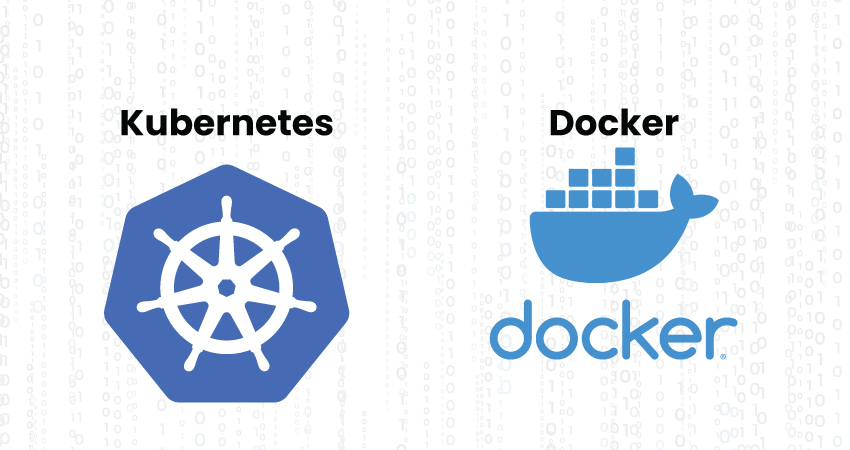Introduction:
In recent years, containerization has gained immense popularity as a lightweight and efficient approach to application deployment. Containerization allows for the packaging of applications and their dependencies into portable units, providing consistency and reproducibility across different environments. To manage and orchestrate containerized applications at scale, platforms like Kubernetes and Docker have emerged as industry-leading solutions. In this article, we will explore the concepts and benefits of Kubernetes and Docker, and how they revolutionize container orchestration.
Understanding Containerization and Docker:
Containerization involves bundling an application and its dependencies into a single unit called a container. Containers provide a consistent and isolated environment, ensuring that the application runs consistently across various infrastructure platforms. Docker, the most popular containerization platform, simplifies the process of creating, managing, and distributing containers. It offers a standardized format for packaging applications, making them portable and easily deployable across different environments.
Introduction to Kubernetes:
Kubernetes, often referred to as K8s, is an open-source container orchestration platform developed by Google. It automates the deployment, scaling, and management of containerized applications. Kubernetes abstracts away the underlying infrastructure complexities, providing a consistent and scalable framework for managing containers. It ensures high availability, load balancing, and fault tolerance, making it an ideal choice for running applications in production environments.
Benefits of Kubernetes:
- Scalability and Resource Efficiency: Kubernetes enables horizontal scaling, allowing applications to dynamically adjust their resources based on demand. It automatically manages the deployment and scaling of containers, distributing the workload efficiently across the available resources.
- High Availability and Fault Tolerance: Kubernetes ensures that applications are highly available by automatically restarting failed containers and distributing them across different nodes. It also provides fault tolerance mechanisms, such as replicating containers and maintaining data redundancy.
- Service Discovery and Load Balancing: Kubernetes offers built-in service discovery and load balancing capabilities. It assigns a unique IP address and DNS name to each container, making it easy for applications to discover and communicate with each other. Load balancing evenly distributes traffic across containers, ensuring optimal performance and resource utilization.
- Self-Healing and Rolling Updates: Kubernetes continuously monitors the health of containers and automatically restarts or replaces them if they fail. It also supports rolling updates, allowing applications to be updated without any downtime or service disruption.
Docker Swarm:
Docker Swarm is another container orchestration platform provided by Docker. While it may not have all the advanced features of Kubernetes, Docker Swarm offers a simpler and easier-to-use solution for managing containerized applications. It provides native integration with Docker and allows for clustering multiple Docker hosts to create a swarm, providing a scalable and resilient environment for container deployment.
Choosing the Right Platform:
When deciding between Kubernetes and Docker Swarm, consider factors such as the complexity of your application, scalability requirements, ecosystem support, and the level of control needed. Kubernetes is well-suited for large-scale deployments and offers extensive features, but it requires a steeper learning curve. Docker Swarm, on the other hand, is a simpler option for smaller deployments that leverages the familiarity of Docker.
The Power of Container Orchestration:
Container orchestration platforms like Kubernetes and Docker Swarm have revolutionized the way applications are deployed, managed, and scaled. They enable organizations to embrace microservices architectures, improve resource utilization, streamline deployment workflows, and achieve high availability and scalability.
Extending Functionality with Ecosystem:
Both Kubernetes and Docker have rich ecosystems with a wide range of complementary tools and services. These include monitoring and logging solutions, container registries, continuous integration/continuous deployment (CI/CD) pipelines, and more. These ecosystem integrations further enhance the capabilities of container orchestration platforms and streamline the overall application development and deployment process.
Conclusion:
Container orchestration platforms like Kubernetes and Docker Swarm have transformed the way applications are deployed and managed. They provide the necessary tools and features to achieve scalability, high availability, and fault tolerance in a containerized environment. Whether you choose Kubernetes for its extensive capabilities or Docker Swarm for its simplicity, leveraging container orchestration platforms will empower your organization to embrace the benefits of containerization and accelerate your application deployment workflows.

